City home use VAWT with Axial flux permanent magnet (AFPM) generator
unclesun
Registered Users Posts: 14 ✭
City area homes are generally small wind. So the type of generator should be commonly used Axial Flux Permanent Magnet (AFPM) generator. Permanent Magnet Synchronous generator (PMSG) is rapidly increasing because of advantages of higher power density, better controllability and higher reliability. However, axial flux permanent magnet (AFPM) generator is drag free because of coreless stator system that makes possible to rotate the windmill from very small wind, higher efficiency of small wind, higher energy yield, lighter weight and better wind power utilization.
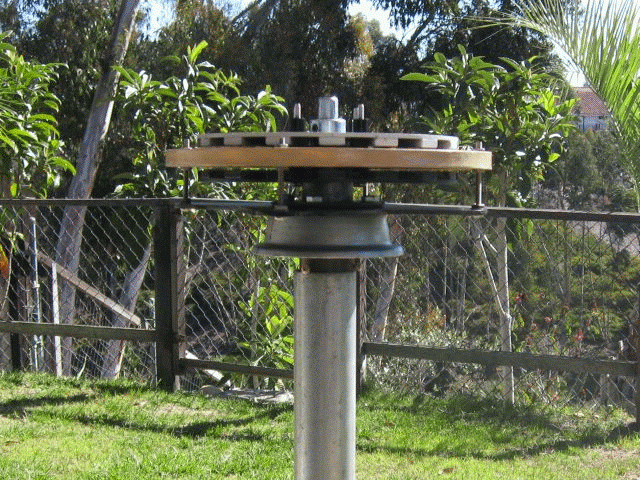
http://www.youtube.com/watch?v=zm2al_rqc2k
Testing rotation
http://www.youtube.com/watch?v=MAGulgalE-k
Testing wings
http://www.youtube.com/watch?v=tVFTwVBL3wE
First, build single layer 12coils-16poles Axial Flux generator; then, start making double layer 12coils-16poles AFPM after reviewed any improving or modification area.
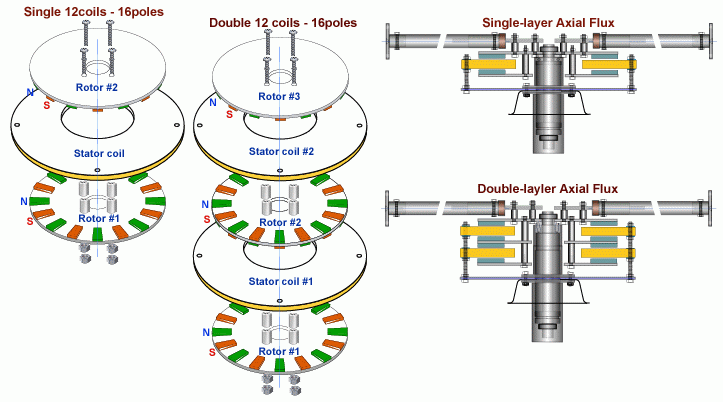
Surprisingly it was completed in 10 days, referring Youtube of WindGenKits.com.
The following was building process:
- to be continue to Part 2 -

http://www.youtube.com/watch?v=zm2al_rqc2k
Testing rotation
http://www.youtube.com/watch?v=MAGulgalE-k
Testing wings
http://www.youtube.com/watch?v=tVFTwVBL3wE
First, build single layer 12coils-16poles Axial Flux generator; then, start making double layer 12coils-16poles AFPM after reviewed any improving or modification area.

Surprisingly it was completed in 10 days, referring Youtube of WindGenKits.com.
The following was building process:
- to be continue to Part 2 -
Comments
-
City home use VAWT with Axial flux permanent magnet (AFPM) generator - part2
1. Making Base
In order to install VAWT on the top of 2" pipe, stand on 2 feet diameter of concrete base. Digging hole for concrete base around 2 feet wide and placing the 2" base steel structure made of re-bar and wire.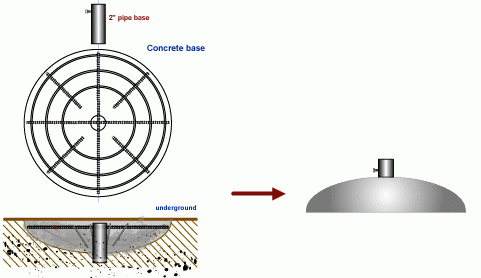
Modified Hand track 2-pcs wheel (about $6) is for Stator base with steel stator hub, it has 4 or 5 holes flange with two bearings inside. The below sketch is the attached 2pcs hand track wheels. In order to rotate smoothly like race Go-Kart or mini-bike wheels, the bearings has been replaced to high speed types. (Go-Kart front hub comes with high-speed bearings.).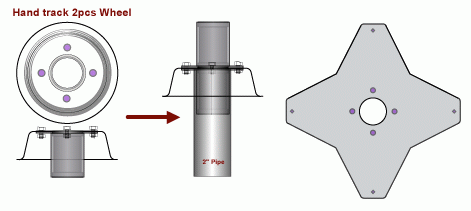
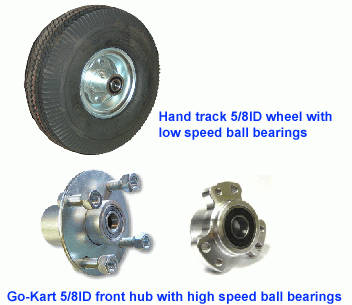
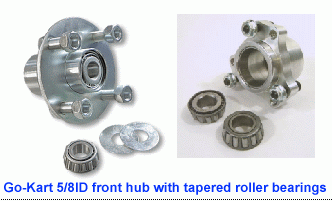
- to be continue to Part 3 - -
City home use VAWT with Axial flux permanent magnet (AFPM) generator - part3
Making Stator coil
Winding copper magnet wire to meet magnet size and place coils and wiring each other along with 3-phase star-wiring, then store inside epoxy mold shell made of cheap particle wood boards. Star-wiring is the most common. This is the 3-phase 12coils-16 poles star wiring stator coil. Start casting epoxy resin and wait for one night. (Glass fiber may be used for increasing durability.)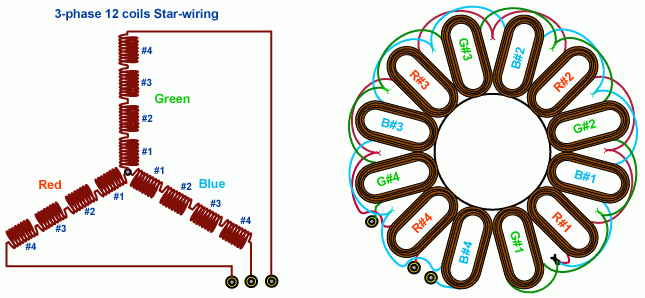
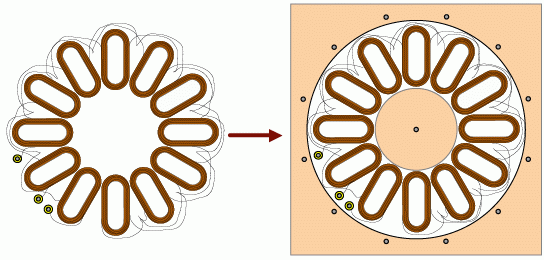
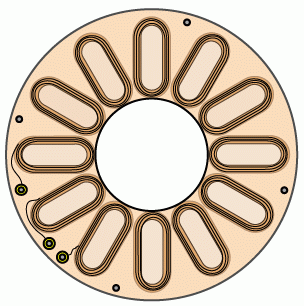
Making Rotors
Cut out steel sheet as round disks and place magnets with epoxy glue (J-B Weld). (Must make necessary holes before attach magnets.) Then, install on Stator base, sandwiched stator coils.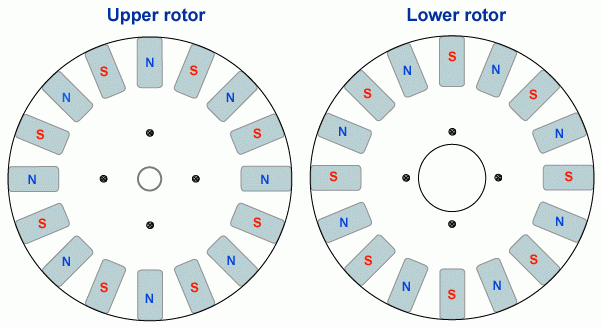
- to be continue to Part4 - -
City home use VAWT with Axial flux permanent magnet (AFPM) generator - part4
Making wing hub
Cut out steel sheet to meet wing shafts and insert wing shaft in to the wing hub. Then, install on the upper magnet rotor (Later, attach wind blades). The wing shaft is made of 1.5mm thick oval aluminum tube (19x29mm) with 3/16" steel plate for hub.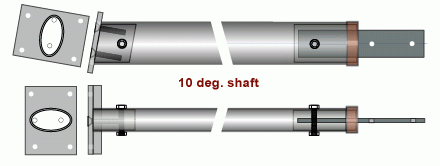
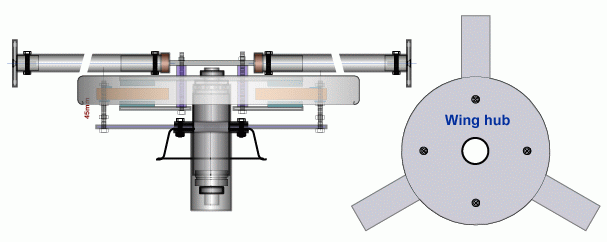
Hub is good for rotating test, but spokes are easy to attach the rotor directly.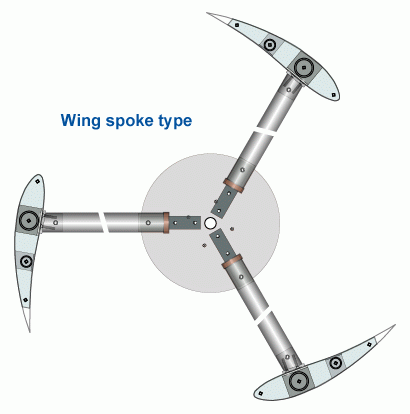

- to be continue to Part5 - -
City home use VAWT with Axial flux permanent magnet (AFPM) generator - part5
Making Aluminum wings/blades
Designing the wing/blade shape with internal reinforce bone structure to withstand centrifugal force to the projected maximum RPM (or wind speed); then, start making wing/blade. Aluminum seems to be a good candidate by light weight and durability, and sheet metal forming will be the major process of making Wings. Sheet metal press tools, English wheel will finish the job quick and easy. On the other hand, ordinal hand tools need more work time. The process is cut, bend and roll; then, add the bone shape reinforce structure on the back, which may depends on the shape of blade and wind. The important point is to provide rain water drain passage. Even if completely sealed wing/blade, rain water may come inside wing/blade after 2 or 3 years.
For example, the below wing type has polystyrene block inside wing to reinforce the structure as well as support the shape of wind. The polystyrene block is cut off at the end of wind edge for rain water drain if rainwater comes in. Another one is puddle-gyro blade with corrugated paperboard like reinforce structure. Corrugated paperboard is well known for durable and light weight.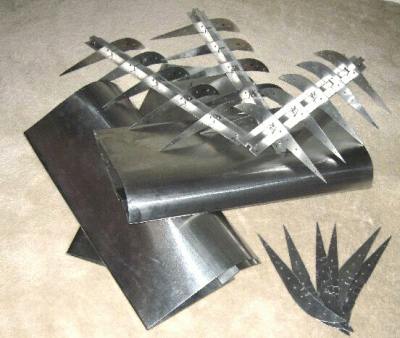
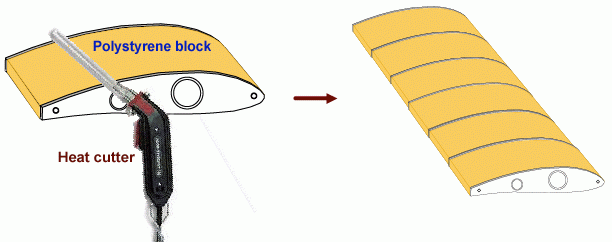
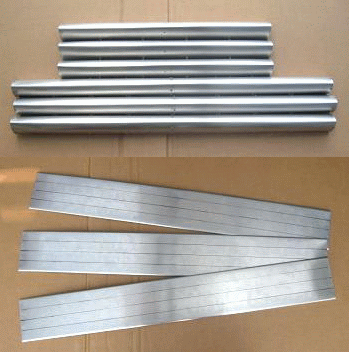
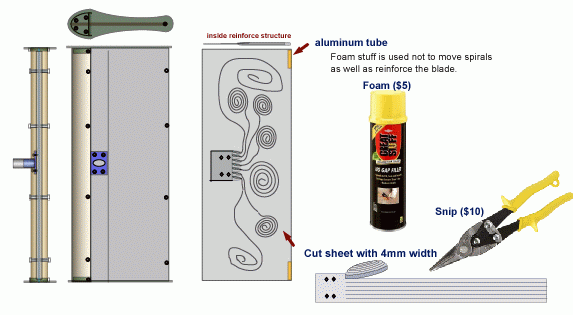
- to be continue to Part 6 - -
City home use VAWT with Axial flux permanent magnet (AFPM) generator - part6
Alternatives
Saddle threshold (aluminum extrusion) will be one of the most easy and durable blade candidates for small VAWT. The below is the examples of aluminum saddle threshold as blade which must be 4"-5" width with 36" height, available at hardware stores around $14-$20, it may need to install 5 or 6 blades to catch enough wind, mostly can be used as cross flow blade. But, home-made blades are more economy.
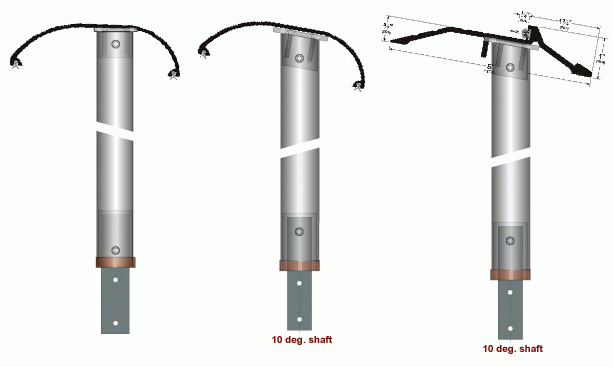
Testing
Test of generating electric power will be the last step, below is the easy way to test. Connect to 3-phase AC to DC12V regulator and DC12V load, associating with voltage meters. Then, start electric fan from min. to max. Then, check both AC and DC voltage. If generating power is small, add blades/wing arms or create more effective wing/blade. DC Wattmeter is easy way to check the generating DC power as above. But, the below schematic is typical simple charging circuit and simple testing.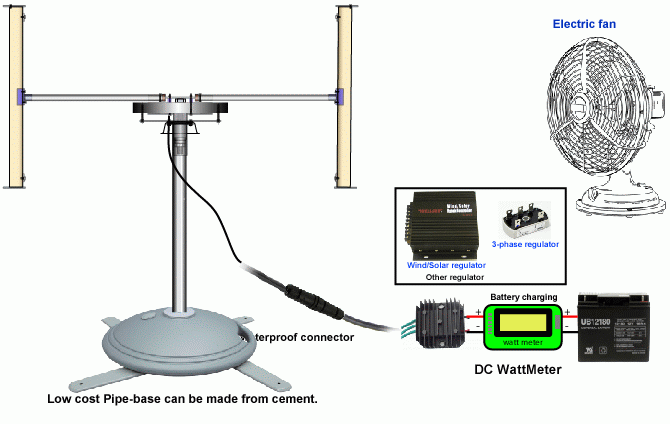
The first stage is 3-phase rectifier (bridge diodes) with cooling heat sink to convert to DC. It required DC load due to non-constant voltage generation, battery is excellent load and dumper, and any device with DC12V operation. The generating voltage will be fluctuating from 0 to way above the desired output voltage, and in order to avoid any damages, so battery should be connected. The battery will absorb any extra power (with in battery's charging capacity), or cover the gap of generating power. SLA (sealed lead acid) battery is recommended. Adding the battery fuse, in case of short-circuit, voltmeter, and ammeter (with shunt). Blade starts rotating, and the ammeter indicates from 0 to the generating current.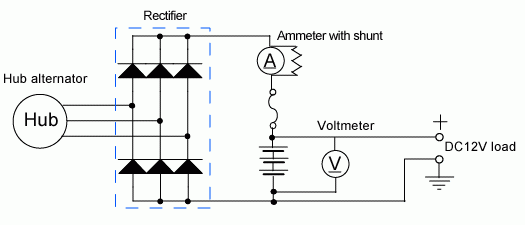
Note: Diversion controller may be added when the generating power exceeds battery's charging capacity to avoid damage/over heat of battery.
I just tested at about 0.3 - 0.5mph, the open voltage was 6 - 7VDC. Planned to check the generating wattage VS rpm (mph) curve. Then, I want to try MPPT wind regulating charger to check the efficiency. After testing this single AFPM for a while, start building double AFPM targetting 500W at 300rpm, I may change some mechanical area. -
Re: City home use VAWT with Axial flux permanent magnet (AFPM) generator - part5
Thank you for the detailed posts on a DIY VAWT... Let's just keep them in one thread--It will make reading/commenting a lot easier.<br><br>-BillNear San Francisco California: 3.5kWatt Grid Tied Solar power system+small backup genset -
Re: City home use VAWT with Axial flux permanent magnet (AFPM) generator - part5
Looks like a commercial for crap.
Basic problem with VAWT: the blades have to turn back in to the wind that's pushing then 'round.
Efficient? Nope. Can't ever be either.
12 VDC is pretty inefficient too. Turbines in general do better at higher output Voltages. -
Re: City home use VAWT with Axial flux permanent magnet (AFPM) generator - part5Cariboocoot wrote: »Basic problem with VAWT: the blades have to turn back in to the wind that's pushing then 'round.
Efficient? Nope. Can't ever be either.
I agree about the inefficiency. But if I had to choose between buying a cheap, inefficient ground mount VAWT and an expensive efficient turbine on a VERY expensive 90 ft tower... I wouldn't be surprised if the VAWT were more cost effective. I haven't a clue what these things cost, but I would gladly give up some efficiency in order to avoid a tall tower.
--vtMaps (who avoids roofs and towers)4 X 235watt Samsung, Midnite ePanel, Outback VFX3524 FM60 & mate, 4 Interstate L16, trimetric, Honda eu2000i
Categories
- All Categories
- 233 Forum & Website
- 141 Solar Forum News and Announcements
- 1.4K Solar News, Reviews, & Product Announcements
- 200 Solar Information links & sources, event announcements
- 900 Solar Product Reviews & Opinions
- 256 Solar Skeptics, Hype, & Scams Corner
- 22.5K Solar Electric Power, Wind Power & Balance of System
- 3.5K General Solar Power Topics
- 6.7K Solar Beginners Corner
- 1K PV Installers Forum - NEC, Wiring, Installation
- 2.1K Advanced Solar Electric Technical Forum
- 5.6K Off Grid Solar & Battery Systems
- 429 Caravan, Recreational Vehicle, and Marine Power Systems
- 1.1K Grid Tie and Grid Interactive Systems
- 656 Solar Water Pumping
- 817 Wind Power Generation
- 624 Energy Use & Conservation
- 623 Discussion Forums/Café
- 315 In the Weeds--Member's Choice
- 75 Construction
- 125 New Battery Technologies
- 108 Old Battery Tech Discussions
- 3.8K Solar News - Automatic Feed
- 3.8K Solar Energy News RSS Feed
